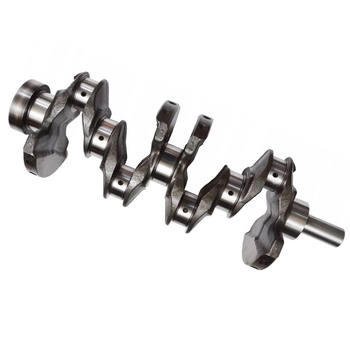Introduction
When it comes to engine builds, choosing the right crankshaft is an extremely important decision that can make or break your project. To be honest, many people overlook this crucial aspect, which can lead to performance issues, reduced durability, and even engine failure. In my experience, selecting the correct crankshaft for your specific engine build can significantly improve your engine's performance, reliability, and longevity.
Understanding Crankshafts
Before diving into the details of choosing the right crankshaft, it's essential to understand what a crankshaft is and how it works. A crankshaft is a rotating shaft that converts the reciprocating motion of the pistons into rotational motion, which drives the vehicle's wheels. It's one of the most critical components of an engine, and its design and construction significantly impact the engine's performance, durability, and reliability.
Types of Crankshafts
There are two main types of crankshafts: cast and forged. Cast crankshafts are made by pouring molten metal into a mold, while forged crankshafts are made by heating and hammering a piece of metal into shape. Forged crankshafts are generally stronger, lighter, and more durable than cast crankshafts, making them the preferred choice for high-performance engines. However, they are also more expensive.
Factors to Consider When Choosing a Crankshaft
When choosing a crankshaft for your engine build, there are several factors to consider, including the engine's intended use, power output, and budget. Here are some of the most critical factors to keep in mind:
Engine Intended Use
The engine's intended use is one of the most important factors to consider when choosing a crankshaft. For example, if you're building an engine for a street car, you may prioritize durability and reliability over pure power. On the other hand, if you're building an engine for a race car, you may prioritize power and lightness over durability. By understanding your engine's intended use, you can choose a crankshaft that is optimized for your specific needs.
Power Output
The engine's power output is another crucial factor to consider when choosing a crankshaft. Generally speaking, higher power output requires a stronger and more durable crankshaft. This is because higher power output creates more stress on the crankshaft, which can lead to failure if the crankshaft is not up to the task. By understanding your engine's power output, you can choose a crankshaft that is strong enough to handle the stress.
Budget
Of course, budget is always a factor to consider when building an engine. Forged crankshafts are generally more expensive than cast crankshafts, but they offer better performance and durability. If budget is a concern, you may need to compromise on some features, such as crankshaft material or design.
Choosing the Right Crankshaft Material
When it comes to crankshaft materials, there are several options to choose from, including cast iron, steel, and aluminum. Cast iron is the most common material for cast crankshafts, while steel and aluminum are commonly used for forged crankshafts. Each material has its advantages and disadvantages, so it's essential to choose the right one for your specific needs.
Cast Iron
Cast iron is a popular choice for cast crankshafts due to its low cost and good machinability. However, it's also heavier and less durable than other materials. Cast iron crankshafts are generally suitable for low-performance engines that don't require high durability or power output.
Steel
Steel is a popular choice for forged crankshafts due to its high strength and durability. It's also heavier than aluminum, which can be an advantage or disadvantage depending on the engine's intended use. Steel crankshafts are generally suitable for high-performance engines that require high durability and power output.
Aluminum
Aluminum is a popular choice for forged crankshafts due to its lightweight and good strength-to-weight ratio. It's also more expensive than steel and cast iron. Aluminum crankshafts are generally suitable for high-performance engines that require lightness and high durability.
Conclusion
Choosing the right crankshaft for your engine build is an extremely important decision that can significantly impact the engine's performance, durability, and reliability. By understanding the different types of crankshafts, the factors to consider when choosing a crankshaft, and the different crankshaft materials, you can make an informed decision that is optimized for your specific needs. Remember, the right crankshaft can make all the difference in your engine build.




